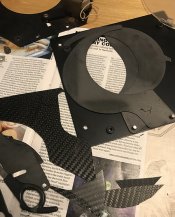illumiquest
Member
So I recently found a very large Packard style shutter off a copy camera, one with a 24v electric motor to open and close the mechanism. I'd like to try mating this to my 8x10 and 16x20 camera but need a way of setting shutter speeds up to 1/60th.
I've searched around a little for simple relay timers but none of them seem to adjust past 1 second.
Has anyone found something cheap that works with this or have any suggestions of what I might try?
I've searched around a little for simple relay timers but none of them seem to adjust past 1 second.
Has anyone found something cheap that works with this or have any suggestions of what I might try?











